List the attributes of a typical fishery and this would tick boxes for many nature reserves too. They consist of naturalised wetlands, often with a diverse range of habitats in one site. Many areas have low footfall and remain largely undisturbed. What human visitors there are keep a low profile and remain quiet and still for much of the time. There are regular, often daily, patrols to identify issues or changes in the environment that may affect the health of the site, such as changes in water quality and health and safety concerns. Through committees and work parties, dedicated teams of volunteers to maintain and manage the fishery, often for decades.
Angling and nature conservation – working in partnership in the Colne Valley
© Tony Booker
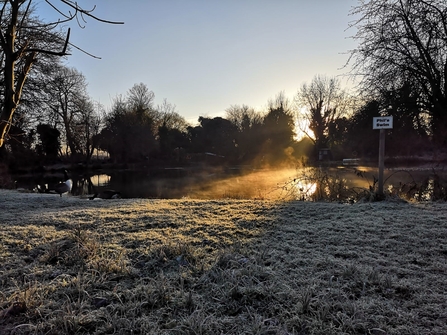
© Anthony Johns / West Hampstead Angling Society
In the Colne Valley, a region famous for its coarse fishing and home to a large network of gravel pit lakes and river systems, angling clubs have a significant role to play as guardians of the natural environment. The wildlife present on some fisheries sites is close to rivalling that of some of the most impressive nature reserves. Anglers are stewards of rare habitats such as fen meadow, reedbeds, meadow grassland and wet woodland. You see enough kingfishers on some venues to make a wildlife photographer’s lens pop. The water vole is one of the UK’s rarest mammals and in the Colne Valley we have just two established populations. One is on a nature reserve. The other? On a fishery - where this rare species is thriving alongside traditional fisheries management.
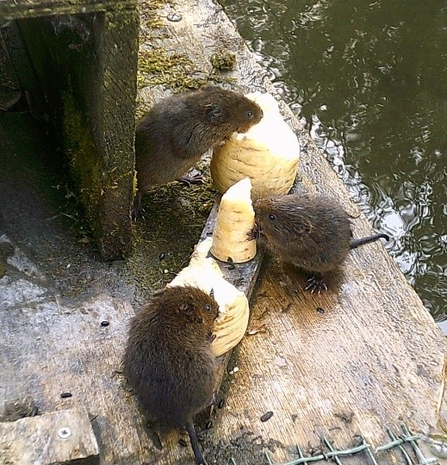
One of the Colne Valley’s two known water vole populations is found on a fishery. Here, three juveniles make the most of a baited camera trap monitoring station maintained by a fishery member.
© Tony Booker
Without management by angling clubs, in the Colne Valley and up and down the country, many of our lakes and rivers would fall prey to neglect and become far less valuable – for wildlife and for people.
Herts and Middlesex Wildlife Trust and the Colne Valley Fisheries Consultative (CVFC), which represents the interests of angling clubs in the Colne Valley, are working together to celebrate the role anglers play as stewards of wetland environments and to help clubs maximise the potential of their fisheries for both fish and wildlife.
Supported by the National Lottery Heritage Fund and the HS2 Colne Valley Mitigation Panel, CVFC and the Trust offer angling clubs in the Colne Valley an integrated fisheries and wetland management course. Covering topics as diverse as fish biology and health, fisheries legislation, algae and silt control, fish capture, wetland habitat management, ecological succession, and how to write a good management plan, the course is accredited by the AQA Unit Award Scheme, meaning anglers that attend receive formal certification.
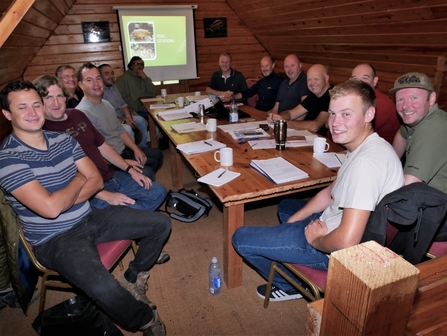
Anglers on the Angling and Nature Conservation Course in 2019 © Gavin Bennett
Anglers who join the course work with the Trust and CVFC to produce management plans for their fisheries to enhance habitats onsite for fish and wildlife and maintain these into the future. The aim of the management plans is to balance objectives of managing a fishery with maintaining, restoring and creating wildlife habitats, but in reality, these often go hand in hand. Fish managed by anglers and the wildlife living alongside them benefit from the same activities which promote good water quality, a healthy and diverse invertebrate community, and a wide variety of aquatic and wetland habitats.
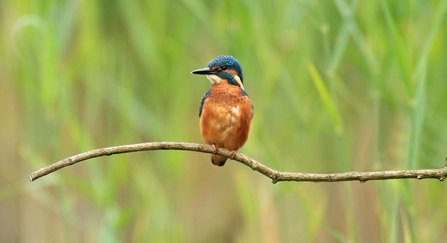
Kingfisher © Jon Hawkins - Surrey Hills Photography
Following on from the training and management planning, Herts and Middlesex Wildlife Trust continues to support clubs with advice on enhancing wetlands and other important habitats on their fisheries. Funding available through the project is being used to purchase equipment, materials and to send anglers on further training courses – giving clubs the means to manage their land into the future.
CVFC give clubs the opportunity to access and contribute to an online app and recording scheme holding catchment-wide data on pollution incidents, invasive species records and river health monitoring. As well as being better informed about issues that may affect their fisheries, by taking part in this scheme clubs can also form part of a wider catchment management community in the Colne Valley, and bring benefits to wetlands both on and beyond fished waters.
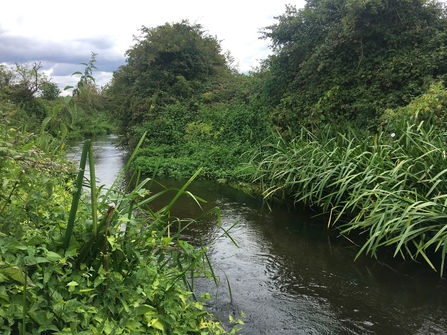
Involvement in the project gives angling clubs access to information that helps them monitor the health of their fisheries and contribute to catchment-wide monitoring.
© Lydia Murphy
21 anglers from 11 angling clubs have become involved in the project to date. These represent 18 fisheries sites which, linked together, form a formidable network of wetland refuges for fish and homes for wildlife. Along the Colne Valley, lakeside trees are being managed to improve water quality and create new habitats for water voles. Gravel beds are being restored to rivers, creating spawning and refuge grounds for fish and homes for countless invertebrates. Grassland surrounding fishing lakes is being sown with wildflower seed and managed by anglers to create meadows rich in insect life.
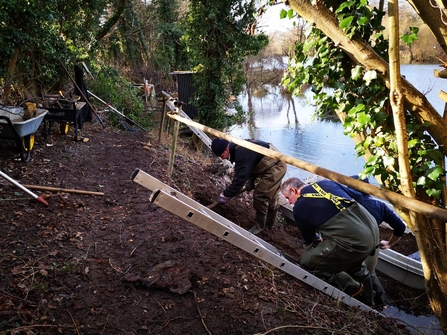
Anglers creating a kingfisher nesting bank at Sabeys Pool in Rickmansworth.
© Anthony Johns/West Hampstead Angling Society
The work of this project shows how much the angling community and the conservation sector can help each other, and the dividends that are returned working in partnership. Engaging with Herts and Middlesex Wildlife Trust and CVFC gives angling clubs access to training, funding and other support to maximise the potential of their fisheries and their contribution to the management of the catchment as a whole. The opportunity to collaborate with CVFC and individual angling clubs allows the Trust to work to restore nature at a regional scale, creating a true living wetland landscape in the Colne Valley. Many other stakeholders benefit from this biodiverse, resilient ecosystem – not least everyone who enjoys the valley’s open watery spaces.
Most importantly, working together reminds us that, whatever our individual interests, we who love the outdoors and the natural world have much more in common to share than we have differences to divide us.
For further information about the Angling and Nature Conservation project, please contact:
Conservation Manager, Herts & Middlesex Wildlife Trust: tim.hill@hmwt.org.
Chairman of the Colne Valley Fisheries Consultative: tony@cvfc.org.uk.
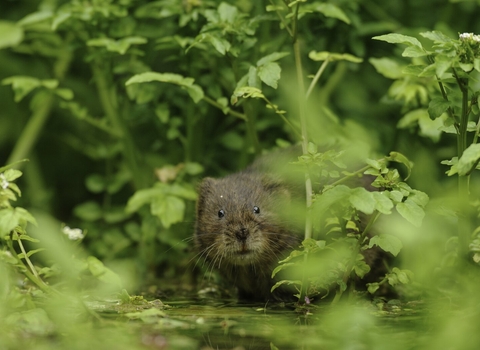
Water Vole © Terry Whittaker/2020VISION
Colne Valley - A Landscape on the Edge
This blog was written as part of the Colne Valley - A Landscape on the Edge project which comprises two projects, managed by Colne Valley Rivers and Wetlands Officer Lydia Murphy.

